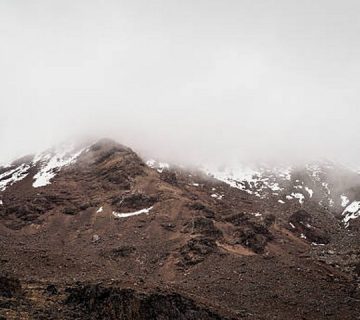Green Packing List For Kilimanjaro Trekkers
Embarking on a trek to the roof of Africa, Mount Kilimanjaro, is not just a journey of physical endurance, but also a profound engagement with nature. As stewards of this ancient mountain, each step we take can contribute to preserving its beauty and vitality. That’s why at Kilimanjaro Centre for Trekking and Ecotourism (KCTE), we advocate for eco-friendly trekking practices, starting with the most essential component: your packing list.
Why Opt for a Green Packing List?
When you choose to pack green for your Kilimanjaro climb, you’re not just preparing for an adventure; you’re actively participating in the conservation of this unique ecosystem. Sustainable trekking minimizes the environmental footprint, supports local economies, and preserves the pristine condition of natural habitats for future generations. Let’s explore how you can make your Kilimanjaro experience environmentally friendly.
Essential Eco-Friendly Gear
1. Sustainable Clothing
Opt for apparel made from organic or recycled materials. Brands committed to sustainability often use environmentally friendly processes that reduce water usage and carbon footprint. Look for items like:
- Merino wool base layers: Biodegradable and excellent at regulating body temperature.
- Recycled fleece jackets: Provides essential warmth while reducing plastic waste.
2. Biodegradable Hygiene Products
From sunscreen to toothpaste, choosing biodegradable products ensures that your use of personal care items doesn’t harm the mountain’s flora and fauna. Consider:
- Biodegradable soap and shampoo: These leave no harmful residues in the environment.
- Eco-friendly sunscreen: Free from chemicals like oxybenzone, which can damage ecosystems.
3. Reusable Water Bottles and Utensils
Discarded plastic bottles and utensils are a significant issue in natural spaces. Packing reusable items cuts down on waste dramatically:
- Insulated water bottles: Keep your water cold or your tea hot without the need for disposable cups.
- Bamboo or metal utensils and straws: Lightweight and reusable, these are perfect for your meals during the trek.
4. Solar-powered Devices
Reduce battery waste by opting for solar-powered alternatives. These are particularly useful for:
- Solar chargers: Keep your essential devices charged without relying on disposable batteries.
- Solar-powered lights: Useful around camp without the environmental cost of traditional batteries.
Packing Smart – What Not to Bring
Avoid overpacking to reduce your load and minimize waste. Here are some tips:
- Leave behind excess packaging: Remove unnecessary plastic and cardboard before you leave home.
- Avoid single-use plastics: These are often not recyclable and can be harmful to wildlife.
Supporting Local and Sustainable
1. Hire Local Guides and Porters
At KCTE, we pride ourselves on providing employment to local guides and porters who are knowledgeable about eco-friendly trekking practices. This not only enhances your experience but also supports the local economy.
2. Choose Locally Made Souvenirs
Opt for crafts made by local artisans. This reduces the carbon footprint associated with transporting goods and helps keep traditional crafts alive.
The Role of Technology in Eco-Friendly Trekking
Leverage modern technology to enhance your green trekking experience:
- GPS apps: Reduce the need for physical maps and the waste associated with them.
- E-books and online guides: Carry less and keep all your trekking information on one device.
Before You Go: Preparing for An Eco-Friendly Trek
Before embarking on your Kilimanjaro journey, consider the following:
- Educate yourself: Understanding the local ecology and cultural norms can greatly enhance your ability to trek responsibly.
- Pack efficiently: A lighter pack means less energy expended, making your climb more sustainable.
Summary and Call-to-Action
Trekking Kilimanjaro is an unforgettable adventure, made even more rewarding by knowing you’re protecting the environment. With this green packing list, you’re ready to conquer Kilimanjaro responsibly and sustainably.
Are you excited to embark on this eco-friendly adventure? Book your Kilimanjaro climbing expedition with Kilimanjaro Centre For Trekking and Ecotourism (KCTE) today! Experience the majestic beauty of Kilimanjaro while adhering to the highest standards of ecological responsibility.
FAQs on Green Packing for Kilimanjaro Trek
Q: Why is it important to use biodegradable products on Kilimanjaro?
A: Biodegradable products break down naturally and minimize environmental impact, preserving the ecosystem for future trekkers.
Q: Can I rent eco-friendly gear instead of buying new?
A: Yes, renting gear is a sustainable choice that reduces waste. KCTE offers options for renting high-quality, eco-friendly trekking equipment.
Q: How does hiring local guides contribute to sustainable trekking?
A: Local guides are trained in eco-friendly practices and their employment supports the local community, promoting sustainable development.
Q: Are there any specific items I should avoid bringing on a Kilimanjaro trek?
A: Avoid items like plastic bags, non-biodegradable wipes, and aerosol sprays, as these can harm the environment.
Q: How can technology help me trek more sustainably?
A: Technology such as solar chargers and GPS apps reduces reliance on non-renewable resources and minimizes waste, contributing to a greener trek.
Join us at KCTE for a greener approach to conquering Kilimanjaro. Protect the beauty you come to experience. Book your trek today and be a part of the change!




